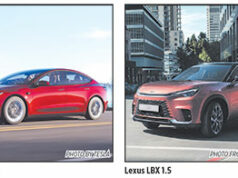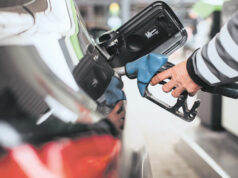The Philippines, owing to the sustained growth it has been experiencing in recent years, now has one of the fastest-growing automotive industries in Southeast Asia.
The latest 2017 car sales figures show that growth in the country’s auto sector grew by nearly a fifth, or 18%, from 2016, keeping the string of annual double-digit growth of the industry unbroken since 2012. According to data from the Chamber of Automotive Manufacturers of the Philippines, Inc. (CAMPI) and Truck Manufacturers Association (TMA), the groups’ member companies collectively sold 425,673 vehicles last year, up 18.4% from 359,572 units in 2016 and blasting through the group’s 2017 target of 400,500 units.
Yet, it would be hard to assume that such a trend would continue in 2018. With these new fortunes come new challenges, and for the country’s car makers, these are coming in the form of the Tax Reform for Acceleration and Inclusion (TRAIN) law, the first package of the comprehensive tax reform program envisioned by President Rodrigo R. Duterte’s administration that will raise excise taxes on vehicles and other products in lieu of lowering taxes for lower-income Filipinos.
In the words of Vernon B. Sarne in an opinion piece published in BusinessWorld last Dec. 20, “To wit, vehicles with a net selling price of P600,000 and below will now be taxed 4% (a maximum P24,000), compared to the previous 2% (a maximum P12,000). Vehicles with a net selling price of more than P600,000 up to P1 million will now be taxed a flat rate of 10%. Before, vehicles with a net price of more than P600,000 up to P1.1 million followed a graduated taxation formula of P12,000 (2% of P600,000) plus 20% of any amount exceeding P600,000.”
“Vehicles with a net selling price of more than P1 million up to P4 million will now be taxed a flat rate of 20%. Before, vehicles with a net price of more than P1.1 million up to P2.1 million were taxed P112,000 plus 40% of any amount exceeding P1.1 million,” he wrote.
“Vehicles with a net selling price of more than P4 million will now be taxed a flat rate of 50%. Before, vehicles with a net price of more than P2.1 million were taxed P512,000 plus 60% of any amount exceeding P2.1 million.”
The impact of the tax reform on the auto industry, of course, is already being felt. “While exceeding our sales target for the year, we remain cautious in our projection for 2018,” Rommel R. Gutierrez, president of CAMPI and a first vice-president at Toyota Motor Philippines (TMP), said in a statement.
Mr. Gutierrez, however, expressed his confidence that the market will be able to adjust to the new excise taxes. TMP, which accounts for a 43.2% share of the automobile industry’s market volume, is already amending its prices on its company Web site.
The Wigo 1.0G A/T, the company’s cheapest offering, now bears a sticker price of P611,000 — P12,000 higher than its pre-TRAIN counterpart. On the other side of the spectrum, the Land Cruiser 200 4.5 Premium is now priced at P4.650 million —P350,000 more than its old price. The popular Vios, a market favorite since its introduction in the Philippines, saw a P12,000 increase in the price of its base model, while the top 1.5G A/T variant saw a rise of P28,000.
Mr. Sarne pointed out that these increases might not account for that much of a speedbump in the grand scheme of things.
“The robust sales of small cars will continue unabated. A maximum P12,000 price increase for these affordable vehicles won’t mean much to buyers, especially if they avail of a four- to five-year financing plan. That 2% bump in excise tax will hardly be felt in the final computation,” he wrote.
With more expensive models, Mr. Sarne noted that a car with a net selling price of P15 million will now be taxed P7.5 million, an amount that is lower than the taxed P8.252 million following the old tax plan.
“In the luxury car segment, the new excise tax actually gets lower the higher the manufacturer’s selling price is. Which means sales of premium sedans, luxury SUVs and exotic supercars should hold steady, if not grow even further,” he said.
What bears noting is the tax exemptive status that TRAIN is giving alternative-fuel powered vehicles and pickup trucks. Electric vehicles will be exempt from taxation, while hybrid cars are to be taxed at half the indicated rates.
“Pickups have enjoyed a more consumer-friendly reputation lately as lifestyle vehicles, and they are now being purchased by city dwellers who otherwise wouldn’t touch leaf-sprung trucks with a 10-foot pole,” Mr. Sarne wrote. “Imagine what tax exemption would do for their popularity.”
Meanwhile, tax exemption could be a huge incentive towards the promotion and adoption of electric and hybrid vehicles, paving the way for more environment-friendly options to appear in the market within the year. Manufacturers that have already dipped their hands in the production of green vehicles may soon introduce new lineups, and hybrids and EVs could be populating Metro Manila’s roads by the end of 2018.
A new market for alternative-fueled vehicles could provide the Philippine automotive industry enough forward momentum to offset any negative effect the TRAIN law could have towards the sales of conventional vehicles. Whether the new tax plan will become a speed bump, or the start of an even more prosperous future for the industry, only time can tell. — Bjorn Biel M. Beltran



